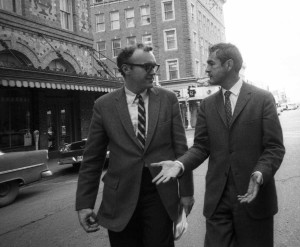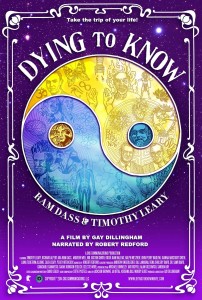
Burbank-based AlphaDogs Post Production recently completed work on a provocative new documentary, Dying To Know: Ram Dass & Timothy Leary. In the film, producer/director Gay Dillingham and associate producer Michael Donnelly take viewers inside the lives of life-long companions and cultural icons, Timothy Leary and Richard Alpert (Ram Dass) in the months preceding Leary’s death from cancer. Nineteen years in the making and narrated by Robert Redford with interviews spanning over 50 years, audiences are taken on an entertaining journey that celebrates the lives of two controversial complex characters. The film gives a new perspective on death and dying along with a rich history of how two Harvard professors became counter-culture icons and unlikely best friends.
A common challenge in finishing documentary films is the wide variety of source footage a finishing editor has to contend with during color correction. Much of the extensive archival interview footage in Dying To Know was done years ago, with the more recent interviews being done in HD. To simplify the mixed format conversion, AlphaDogs editor and colorist, Sean Stack broke the documentary into three separate timelines before beginning the color correction process in DaVinci Resolve. “There’s always more to deconstruct and put back together on documentary films compared to features,” said Stack. “Features usually have one type of camera and format used, sometimes two, while documentaries run the gamut in terms of format, adding to the challenge of conforming for a color session.”
 Two different types of sources were used in archival footage of Leary and Alpert in the main interview that weaves throughout the documentary. DaVinci Resolve was used to balance out dramatically different grain structures and depth from the two sources – Digital Betacam and analog BetaSP. Stack took extra care in creating a seamless look so that viewers would not be distracted from the engaging story being told. This presented challenges that required isolating color corrections on individual faces. “Many of the subjects were very animated and moved their heads while talking,” explained Stack. “The amazing tracking feature in Resolve analyzed the movements and kept the isolated correction exactly where it needed to be in order to follow the face of the subject wherever they moved on the screen.”
Two different types of sources were used in archival footage of Leary and Alpert in the main interview that weaves throughout the documentary. DaVinci Resolve was used to balance out dramatically different grain structures and depth from the two sources – Digital Betacam and analog BetaSP. Stack took extra care in creating a seamless look so that viewers would not be distracted from the engaging story being told. This presented challenges that required isolating color corrections on individual faces. “Many of the subjects were very animated and moved their heads while talking,” explained Stack. “The amazing tracking feature in Resolve analyzed the movements and kept the isolated correction exactly where it needed to be in order to follow the face of the subject wherever they moved on the screen.”
Associate producer Donnelly also oversaw all postproduction aspects of the film. “Working with the AlphaDogs post team was a pleasure. The talented and good-humored crew consistently met, (and usually went beyond), the call in all aspects of their services: creative, technical, business, scheduling and delivery,” said Donnelly. “Our complex project presented a variety of technical challenges, most due to its nearly 19-year gestation. Unifying multiple formats, modern and retro styles, frame sizes and rates, visual effects, modern lettering, old stock film and photo elements could have been a nightmare and it wasn’t. It was a dream come true.”
“I enjoy being taken into the lives of such interesting people,” said Stack. “It’s almost as though I get to meet them personally, and it’s an honor to help share their stories with the rest of the world.”
The film will premiere Oct. 4 at the Mill Valley Film Festival in San Rafael, Calif.





